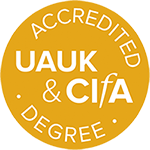Current filters applied:
- (-) Remove Mesopotamia and the Near East filter Mesopotamia and the Near East
- (-) Remove Environment, Landscapes and Settlement filter Environment, Landscapes and Settlement
Displaying 6 projects
Anthropogenic Wetlands and the Long Transition to Agriculture in the Levant (Anthropogenic Wetlands)
The project will develop an innovative new model to examine the pivotal role of anthropogenic wetlands in the long transition to agriculture in the Levant. Remarkably, while this transition has been explored in some detail, we still do not have a good grasp on the long-term developments and causes...
During the Early and Middle Bronze Age (2500-1600 B.C), a range of exchange networks linked Arabia, Iraq, Iran, Bahrain and South Asia, facilitating the long-distance movement of a wide variety of raw materials and finished products. Texts from the Sargonic and Ur III period (2300-2000 BC) provide...
The aim of H-E Interactions is to investigate how increasingly anthropogenic wetland landscapes, and the reliable resources within those environments, influenced the evolution of plant-food production and the origins of agriculture through the Final Pleistocene and into the Early Holocene (ca. 23-8...
SCATTER investigates the multivocal notion of territory in Protohistory through the study of settlement patterns in ecological settings. Specifically, SCATTER focus on the Central Anatolian region during the Middle and Late Bronze Age, i.e. the second millennium B.C. The goal is to acquire better...
PersianTRAIL is a research project using Geographic Information Systems (GIS), Remote Sensing (RS), and historical-archaeological data to reconstruct the Persian Royal Road (PRR), a key infrastructure of the Achaemenid Empire (6th–4th century BCE). The project examines factors like topography...
The Assyrian Empire was the first multinational empire in the ancient near east. By the seventh century BC it had grown to cover all of Iraq, Syria and the Levant, substantial portions of western Iran and south-eastern Turkey and even, for brief periods, Egypt. In the site of Ziyaret Tepe we have...


